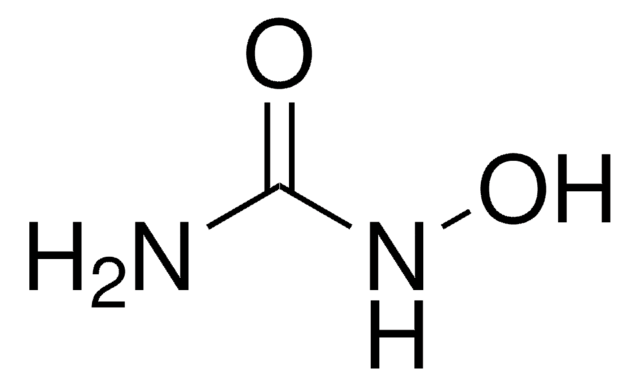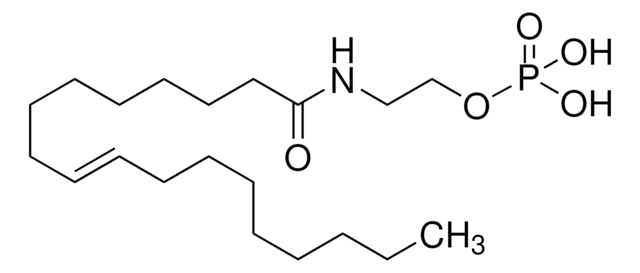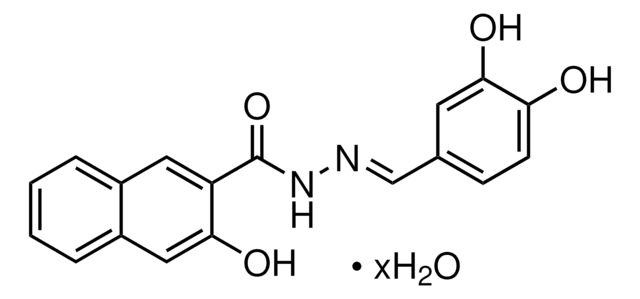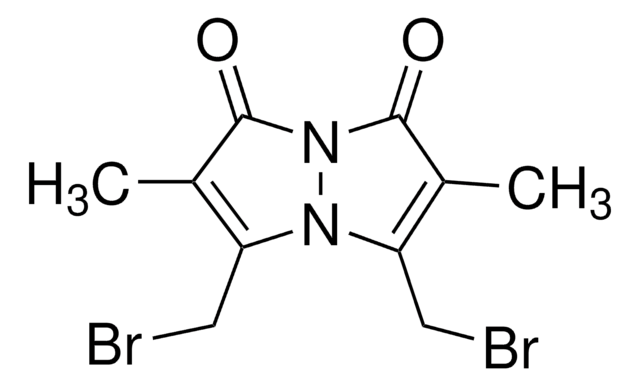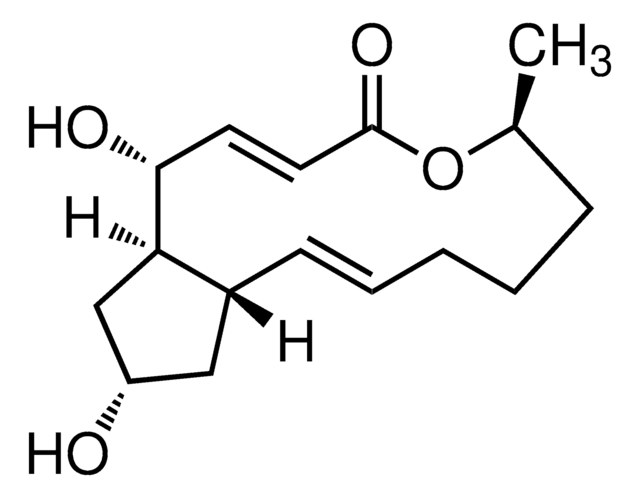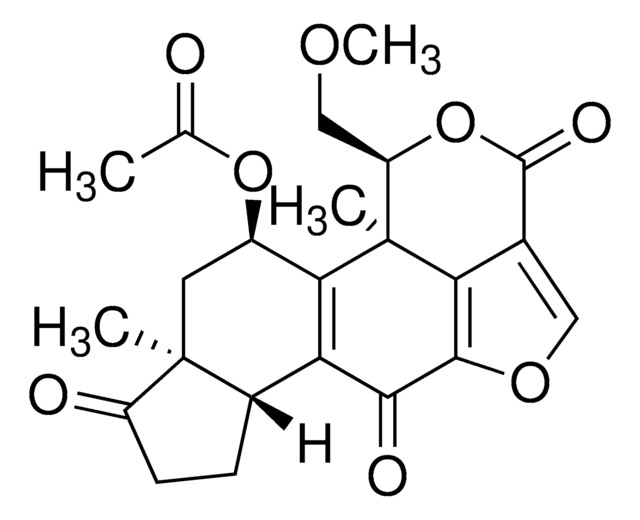P3075
Phenylarsine oxide
≥97%, powder
Synonym(s):
Arzene, Oxophenylarsine, PAO
About This Item
Recommended Products
biological source
synthetic (organic)
Quality Level
assay
≥97%
form
powder
color
white to off-white
mp
145-148 °C
solubility
DMSO: 50 mg/mL
SMILES string
O=[As]c1ccccc1
InChI
1S/C6H5AsO/c8-7-6-4-2-1-3-5-6/h1-5H
InChI key
BQVCCPGCDUSGOE-UHFFFAOYSA-N
Looking for similar products? Visit Product Comparison Guide
General description
Application
Biochem/physiol Actions
Features and Benefits
signalword
Danger
hcodes
Hazard Classifications
Acute Tox. 3 Inhalation - Acute Tox. 3 Oral - Aquatic Acute 1 - Aquatic Chronic 1
Storage Class
6.1C - Combustible acute toxic Cat.3 / toxic compounds or compounds which causing chronic effects
wgk_germany
WGK 3
flash_point_f
Not applicable
flash_point_c
Not applicable
Choose from one of the most recent versions:
Already Own This Product?
Find documentation for the products that you have recently purchased in the Document Library.
Customers Also Viewed
Our team of scientists has experience in all areas of research including Life Science, Material Science, Chemical Synthesis, Chromatography, Analytical and many others.
Contact Technical Service

